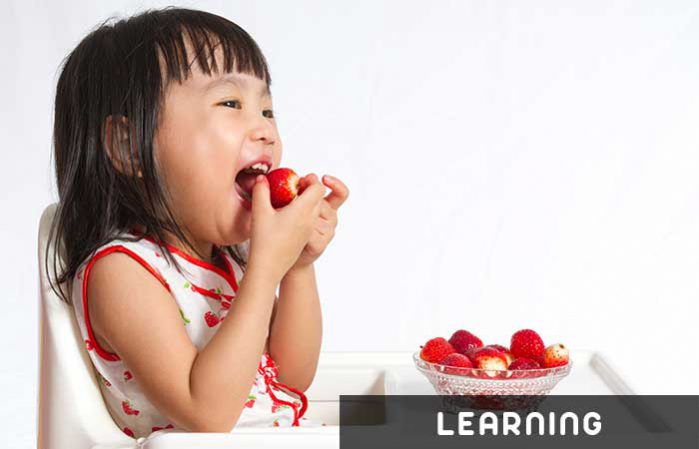
If you take a moment to think about it, managing impulsivity is sort of the flip side of persisting. It is only natural to want to avoid hard work; persisting therefore is managing the impulse to quit as soon as the going gets tough.
However, managing impulsivity can be really challenging for younger children, whose brains and emotions are still relatively immature. The younger they are, the harder it can be. As parents, we need to remember to set age-appropriate goals for our children. Asking a child to “think before he speaks” is probably a reasonable request for a teenager, but not for a toddler!
So, how can we encourage this mindset in our children? Here’s what managing impulsivity can look like at every stage of development:
For infants: Forget about it at this stage! Self control doesn’t even begin to develop until about the age of two, so dial down your expectations at this point. At this stage, it’s all about positive reinforcement. Celebrate your child’s achievements and enthusiastically praise him whenever he succeeds in being patient, taking his turn, or resisting any sort of impulse.
For toddlers: Cognitively, your average three-year-old should have a sense of the future and be able to wait, albeit for a brief period. Appeal to your child’s natural desire to be “big” – for example, you can say: “Wow, you managed to wait for me to get off the phone before helping you. I know it must have been hard. Thank you for trying! What a big boy you’ve become!” Don’t forget that your child is still developing – what is possible one day might not be possible the next.
For preschoolers: Your child is slowly growing his capacity for empathy, which allows him to understand other people’s feelings and desires, which in turn can help manage his impulse to snatch toys, or hit other kids. As your child becomes more able to express his thoughts verbally, you can start to discuss impulse control with him. Reading books about characters that face the same struggles can really help – our family favourite is the hilarious You will be My Friend! by Peter Brown which is packed with teachable moments. If you are a fan of his style, don’t miss his other book, My Teacher is a MONSTER! No I Am Not.)
For primary schoolers: This short video explains impulse control in a lighthearted and easy-to-understand way. There’s also a fun acronym you can use to help your child learn how to manage his impulses: STAR. This stands for Stop, Think, Analyse and then React. Encourage your child to STAR each time he faces a new situation – this will help him consider all his options and to proceed thoughtfully.
Another way you help teach the lesson of impulse management is by role modelling it yourself. Each day provides many small lessons on how to control your impulses, talk with your child at an age-appropriate level about your own struggles to manage an impulse. It’s okay even if you fail (for example, if you snap at someone because you are in a hurry) – what’s important is that you discuss the situation afterwards and perhaps talk about how you will do better next time!
At the end of the day, don’t forget that we are all human, and that we make mistakes occasionally. Don’t sweat the small mistakes, focus on encouraging your child when he does something right, instead. There will always be good days and bad days, even as your child grows and matures – though hopefully the good days will outnumber the bad days!
This article was first seen on goguru.com
This is part two of a 16-part series about Habits of Mind. Follow the series here.
